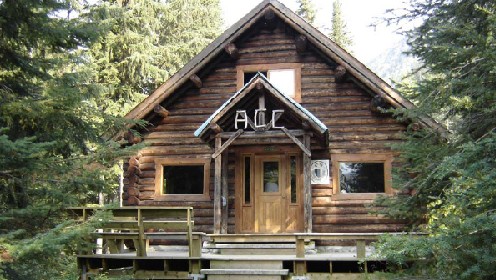Other Name(s)
Rogers Pass National Historic Site of Canada
Rogers Pass
Col Rogers
Links and documents
Construction Date(s)
1881/01/01 to 1917/01/01
Listed on the Canadian Register:
2009/06/05
 Statement of Significance
Statement of Significance
Description of Historic Place
Rogers Pass National Historic Site of Canada is a historic travel corridor through the Selkirk Mountains between an upper reach of the Columbia River as it flows north to cross the Selkirks at the Big Bend and a lower reach where the river flows south. Located today within the boundaries of Glacier National Park of Canada, the official recognition refers to the cultural landscape and resources associated with the former roadbed of the Canadian Pacific Railway main line along what is now the route of the Trans-Canada Highway.
Heritage Value
Rogers Pass was designated a national historic site of Canada in 1971 because of:
- the role of the pass in the construction and development of the main line of the Canadian Pacific Railway into a major national transportation route, 1881-1917.
The heritage value of Rogers Pass lies in its historic associations (1886-1917) as illustrated by the associated landscape and resources along the route of the Trans-Canada Highway through the Selkirk Mountains.
Following the decision of the Canadian Pacific Railway in 1881 to adopt the southerly route through the Rockies at Kicking Horse Pass, it became necessary to find a way through the difficult and largely unexplored Selkirks. Major A.B. Rogers, an experienced American railway locating engineer, traversed this pass the next year and so overcame the last great obstacle facing the railway. The steep grade and susceptibility to avalanches made the pass a treacherous part of the line, so the Connaught Tunnel was built in 1916 to bypass it. With the inauguration of the Trans-Canada Highway in 1962, however, it again formed part of a national route.
Sources: Historic Sites and Monuments Board of Canada, Minutes, May 1971; Commemorative Integrity Statement, April 1998.
Character-Defining Elements
Key elements that contribute to the heritage character of the site include:
- the isolated wilderness setting, flanked by steep mountains;
- the location of the pass as defined by the present route of the Trans-Canada Highway;
- the extreme climatic conditions of the area;
- the significant rise in elevation through the pass area;
- surviving evidence of the former rail line, including the graded road bed, vestiges of original bridges, the masonry piers at Loop Brook, the stone arch bridges at Cascade Creek, and the Illicillewaet Illecillewaet River;
- vestiges of rail facilities designed to protect the rail line from heavy weather conditions, such as timber snow sheds in avalanche zones, various culverts, and retaining walls;
- surviving evidence of buildings and structures associated with the operation of a rail line through the pass, including remains of the first Glacier Station and dining room, such as the platforms, station yard and work camp facilities, sheds, and sidings;
- remains of pathways and roadways associated with railway operation of the site.
 Recognition
Recognition
Jurisdiction
Federal
Recognition Authority
Government of Canada
Recognition Statute
Historic Sites and Monuments Act
Recognition Type
National Historic Site of Canada
Recognition Date
1971/05/27
 Historical Information
Historical Information
Significant Date(s)
1885/01/01 to 1886/01/01
1911/01/01 to 1917/01/01
Theme - Category and Type
- Developing Economies
- Communications and Transportation
Function - Category and Type
Current
- Transport-Land
- Traditional Trail or Trading Route
Historic
Architect / Designer
n/a
Builder
n/a
 Additional Information
Additional Information
Location of Supporting Documentation
National Historic Sites Directorate, Documentation Centre, 5th Floor, Room 89, 25 Eddy Street, Gatineau, Quebec
Cross-Reference to Collection
Fed/Prov/Terr Identifier
72
Status
Published
Related Places

Arthur O. Wheeler Hut
The Arthur O. Wheeler Hut is a one-and-a-half-storey, rectangular, log building on a stone foundation, with a gable roof and deep overhangs supported on log brackets, a centrally…